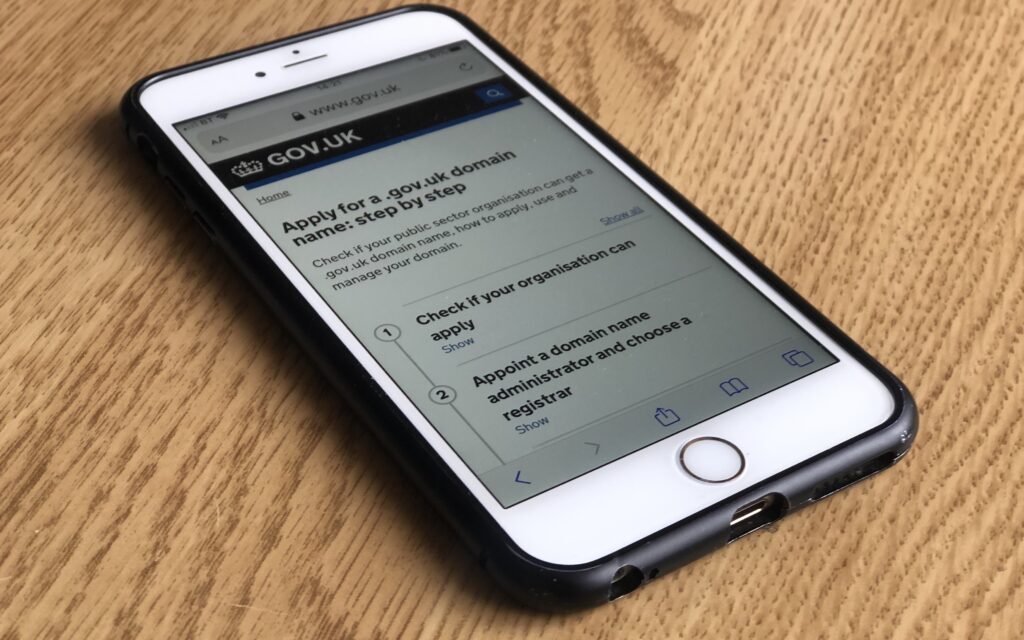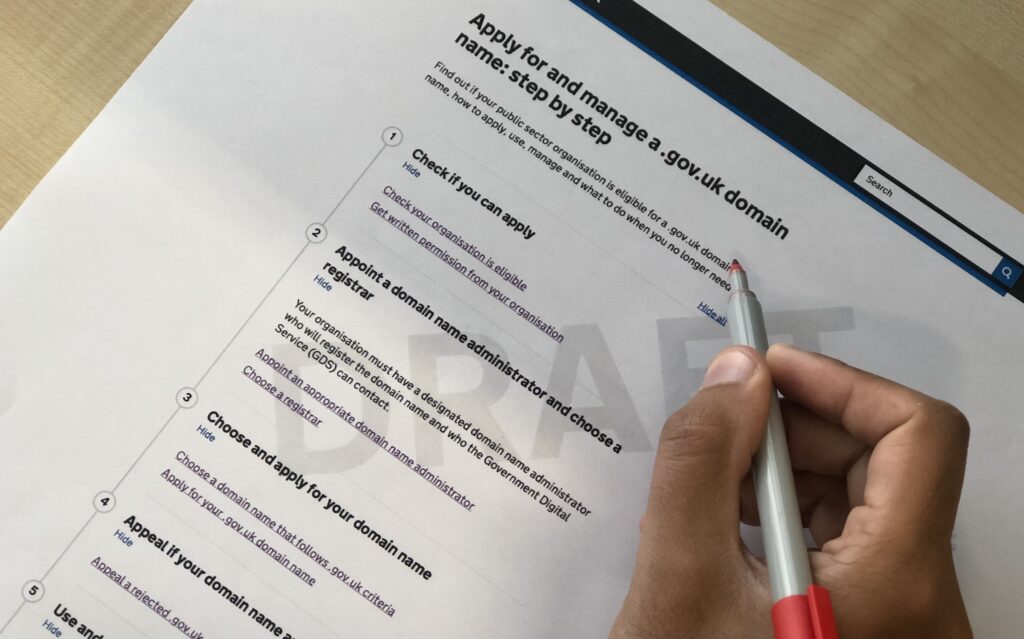
As part of a large-scale programme to improve domain security and management across government, a dedicated Domains Management team was set up and started work to improve the .gov.uk domain name application and management process.
One of the first things we've done is relaunch the guidance to make it easier for public sector organisations to apply for a .gov.uk domain name.
Why we needed to revamp the domains guidance
The original 'naming and registering' guidance was published in 2014, with separate documents for central and local organisations. This resulted in duplication of content, made it hard to update, and did not explain the application process as clearly as possible.
While many of the central government departments have dedicated teams in place to apply for .gov.uk domain names and manage them, 50% of organisations that apply for .gov.uk domain names are smaller councils with limited IT resources.

The Domains Management team set up a service desk to remove any bottlenecks and scale the application process. As applications started coming in to the service desk we saw that small organisations found the existing guidance unclear and overwhelming. We needed guidance that would cater to all applicants, not just domain name experts.
Together as a team, we discussed ways to improve the guidance and then presented our ideas to the cross-government Naming and Approvals Committee. This committee was set up to oversee .gov.uk domain name appeals and was also responsible for helping to draft the original guidance.
Treating .gov.uk domain applications as a service
During our discussions with the Naming and Approvals Committee about how to iterate the guidance, we talked about treating this process in a similar way to other citizen-facing services like ‘Learn to drive a car’.
This led me to investigate whether we could use the GOV.UK step by step pattern to display the content. To get started, I headed to the GOV.UK Design System, which had documentation describing when you can use the step by step pattern and links to the live services.
I researched many of the live services step by step patterns, particularly those that guided users through an application process. Other step by step guides I found useful gave instructions to do things like ‘Set up a limited company’ or ‘Set up a charity’.
Using the step by step pattern appeared like a natural fit for our domains guidance because:
- our domains application process was largely a linear journey
- we had many tasks that needed completing in a particular order
- the existing flat content was not meeting user needs and was trying to help with too many tasks in one
Drafting a prototype of the domains step by step
To evaluate how well the .gov.uk domain name application process would fit into the step by step template, I created a prototype and presented this to the GOV.UK step by step team. We agreed that the process was a good fit and agreed that this would be the first piece of civil servant technologist-facing content to use this template.

The step by step template went through a few rounds of iteration with the help from GOV.UK service designers, content designers and technical writers. I also helped the GOV.UK team test improvements they were making to their step by step publishing tool as they are planning on rolling this out.
Getting cross-government input
Over the course of developing the guidance I worked in the Domains Management team to:
- use incoming queries to the service desk to shape the guidance
- get the content reviewed by 25 people from across central and local government
- iterate the content before publication
We received useful suggestions and lots of positive feedback.

Benefits of the relaunched domains guidance
The most significant additions to the guidance include updating the criteria on how to choose a .gov.uk domain name. We wanted to give users as much help as possible so we added examples of domain names that are acceptable and what are not. We’ve also added in-depth guidance on how to choose a good registrar, put controls in place to make sure role-based email accounts are used as points of contact, and emphasised the security benefits of keeping these details up-to-date.
The main benefits of the new guidance are that it is now:
- 66% shorter than the original (3,400 words vs 11,000 words)
- clearer, with step by step instructions
- duplication-free
- easier to update
- more search engine-friendly
Next steps
The ‘Apply for a .gov.uk domain name: step by step’ is now live, and we’ll continue to test this content with users and iterate it. We’re also working on more guidance and services to help public sector organisations use domains more securely.
If you have any questions or comments about domain management, you can email domainsmanagement@digital.cabinet-office.gov.uk or leave us a comment below.
